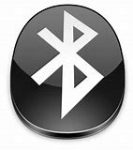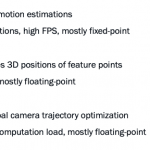I must admit I’m impressed with how CEVA is pulling together foundational solutions for advanced consumer electronics. This through their own technologies (DSP, audio, vision, neural nets) and a rapid pace of partnerships, investments and acquisitions. Off the top of my head, I remember recent announcements on Immervision… Read More
Low Energy Intelligence at the Extreme Edge
Intelligence at the edge is a hot topic these days. Not having to go all the way to the cloud to recognize objects, faces, speech and so on. But I find promoters can be rather fuzzy about what they mean by “the edge”. For many, intelligence at the edge means intelligence closer to the edge than the cloud. In a gateway for example. Not actually… Read More
Combo Wireless. I Want it All, I Want it Now
When we think of wireless it is natural to wonder “which one – cellular, Wi-Fi, BLE?” Our phones support everything but those are pricey devices. What if we wanted the same combo wireless option in a low-cost IoT device, maybe something that only need to send a small amount of data periodically? Logistics applications are a good example.… Read More
Wi-Fi Bulks Up
Wireless discussion these days seems to be dominated by 5G, but that’s not the only standard that’s attracting attention. The FCC just circulated draft rules to dramatically expand bandwidth available to Wi-Fi in the new Wi-Fi 6e standard.
Is this a tragic plea for attention from a once-important standard, now eclipsed by its … Read More
5G Infrastructure Opens Up
It seemed we were more or less resigned to Huawei owning 5G infrastructure worldwide. Then questions about security came to the fore, Huawei purchases were put on hold (though that position is being tested outside the US) and opportunity for other infrastructure suppliers (Ericsson, Nokia, etc) has opened up again.
Building … Read More
Using IMUS and SENSOR FUSION to Effectively Navigate Consumer Robotics
There is a live CEVA webinar coming up that you will NOT want to miss. We have been working with CEVA since 2012 and have posted 130 collaborative blogs. Those blogs have earned 927,901 views thus far and counting. The average blog on SemiWiki.com gets 5,885 views so they are ahead of the game.
One of the reasons CEVA is so popular on SemiWiki
A Bundle of Goodies in Bluetooth 5.2, LE Audio
You know that a technology is becoming a trend to watch when the Economist writes a piece on the topic. We know how big an investment goes into monetizing visual content for our phones, pads and TVs, through the likes of Warner Media, Disney and Netflix. Now there’s a big push into monetizing our ears, driven by Apple and others on the… Read More
Glasses and Open Architecture for Computer Vision
You know that AI can now look at an image and detect significant objects like a pedestrian or a nearby car. But had you thought about a need for corrective lenses or other vision aids? Does AI vision decay over time, like ours, so that it needs increasing help to read prescription labels and identify road signs at a distance?
In fact no.… Read More
Location Indoors: Bluetooth 5.1 Advances Accuracy
OK, so you’re in a giant mall, you want to find a store that sells gloves and you want to know how to get there. Or you’re in a supermarket and you need some obscure item, say capers, that doesn’t really fall under any of the main headings they post over the aisles. If you’re like most of us, certainly like me, this can be a frustrating experience.… Read More
Visual SLAM at the Edge
SLAM – simultaneous localization and mapping – is critical for mobile robotics and VR/AR headsets among other applications, all of which typically operate indoors where GPS or inertial measurement units are either ineffective or insufficiently accurate. SLAM is a chicken and egg problem in which the system needs to map its environment… Read More











